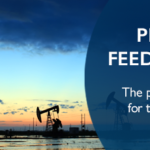Of the 30 companies in the pharmaceuticals sector whose environmental and sustainability reporting was analyzed by the Roberts Environmental Center in 2005, the midsized American firms Bristol-Myers Squibb and Abbott Laboratories clearly had the best environmental and sustainability reporting based on the Center’s Pacific Sustainability Index (PSI). The next best reports, with grades of A- were AstraZeneca (Britain), Johnson and Johnson (US), and Pfizer (US). In this sector as well as in the chemicals sector (reported by the Roberts Center last week) most of the top slots are occupied by American firms, but perhaps this is not surprising inasmuch as all but six of the 30 largest pharmaceutical firms are American.
Even with mid-sized firms taking the top positions, there is a stronger positive relationship between company size and quality of reporting than in any sector we have previously scored, explaining over half of reporting quality. Unlike in the chemicals sector, this relationship is driven by the extremely poor scores of the smallest companies in our sample. Clearly the idea of sustainability reporting has not made much headway in most pharmaceutical companies with revenues smaller than $10 billion, with the exception of $2 billion Allergan (US) which achieved a grade of B, well above average.
All materials were scored using the Center’s Pacific Sustainability Index which also provides grades for six subcategories of reporting. The highest grade of A+ for the environmental categories went to Bristol-Myers Squibb and Johnson and Johnson for expressed environmental intent, Bristol-Myers Squibb for environmental reporting, and Allergan, Bristol-Myers Squibb, and Abbott Laboratories for environmental performance. For the social categories, A+ went to Abbott Laboratories and Bristol-Myers Squibb for expressed social intent, to Abbott Laboratories for social reporting, and to Bristol-Myers Squibb and Johnson and Johnson for social performance.
In this sector the most reported environmental variables were waste produced and disposed of, water and energy used, and protection and enhancement of the natural environment. The most reported social information was business ethics/anti-corruption practices, customer health and safety, and equal opportunity in the workplace
These findings are based on the information available on the web sites of the largest 30 companies in the chemicals sector of the 2005 Fortune Global 500 and Fortune 1000 lists as of December 6, 2005.



